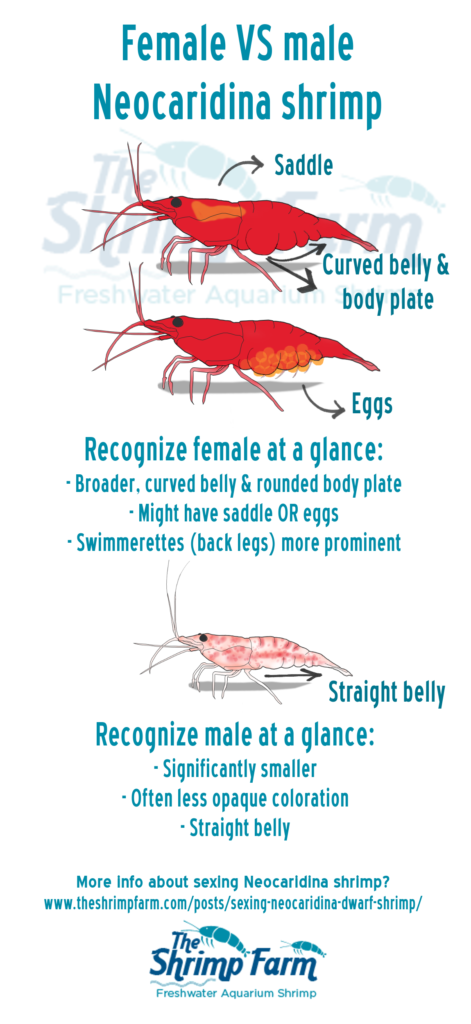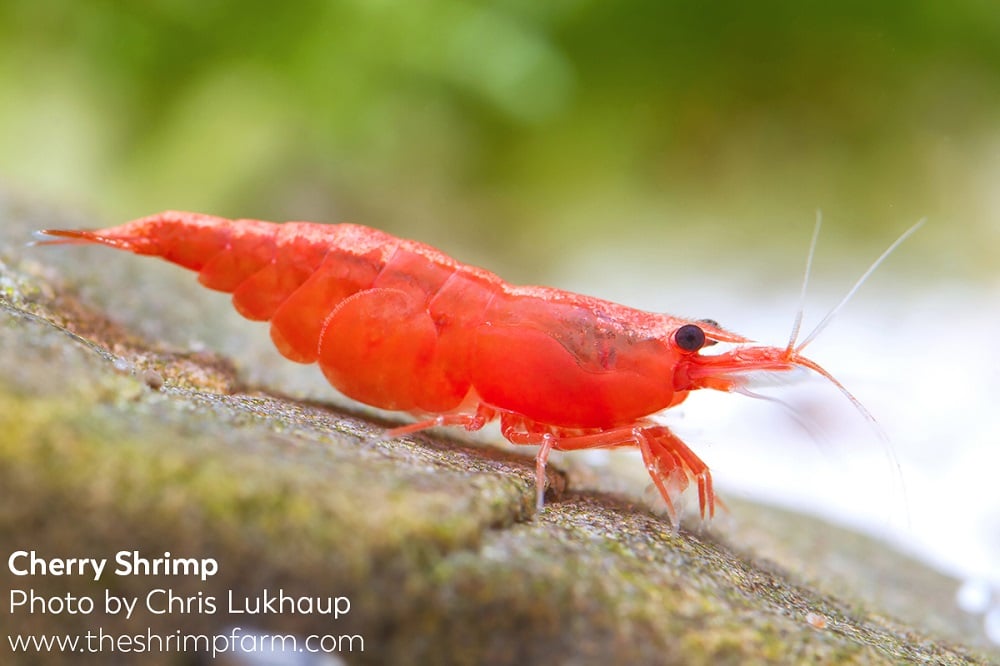Sexing cherry shrimp & other Neocaridina
If you're interested in breeding dwarf shrimp, there are a few requirements that have to be met. Your water quality should be high, the shrimp need to be well-fed and old enough to reproduce. The most important thing, though... you need to have males and females! This is why knowing how sexing cherry shrimp and other Neocaridina dwarf shrimp works is pretty darn handy for shrimp enthusiasts.
But... do you tell them apart when they're so small? If you're struggling to sex your Neocaridina shrimp, keep reading. There are plenty of easy indicators and you'll be able to tell them apart at a glance before you know it!

Table of Contents
Sexing cherry shrimp: Typical female characteristics
Female Neocaridina shrimp have a few unique characteristics that you can use to identify them. Some are very conclusive, like the presence of eggs). Others provide a good indication, but aren't 100% proof of female-ness on their own.
- Size. As with many of the species we keep in our aquariums, female dwarf shrimp are considerably larger than males. You can easily tell them apart by size if there are no juveniles in the tank.
- Color. This won't be of much use when trying to sex very high grade Neocaridinas. In these shrimp, both the males and females will often feature opaque coloration. In lower grades though (like regular cherries) you'll often see a large difference in color between females and males. The females are notably brighter and their colors are more solid, while males are more see-through and their coloration can be sparse.
- Belly. Female dwarf shrimp carry their eggs safely tucked between their back legs (swimmerettes), where they are protected by their extended belly plates. This means they have a much rounder 'belly' than males, which sport body plates that form a straight line to the tail rather than a curve. Their swimmerettes are also more well-developed and you are usually able to see them better than in males.
Additionally, females the first body plate is notably rounder: it almost forms a perfect circle. If you're not sure how to spot this in a shrimp, feel free to zoom in on the chart above!
- Saddle. If a female's exoskeleton doesn't feature extremely opaque coloration, you might sometimes be able to spot a saddle. This yellowish spot behind the head contains the eggs before they are moved to the swimmerettes. A clear indication that a shrimp is female.
- Eggs. Can you see greenish to yellowish eggs tucked between a shrimp's back legs? Congrats, it's definitely a female! Just don't confuse eggs with the dreaded 'green shrimp fungus', which is a parasite that also attaches to the swimmerettes and can be confusing for beginners. Eggs are relatively large and round, while fungus is thinner and more elongated.
QUIZ TIME: In the photo below, based on the info you just read, are we looking at a male or female cherry shrimp here? Find the answer at the bottom of this post!
Sexing cherry shrimp: Typical male characteristics
We can be pretty short about typical male characteristics, as we've already discussed most identifying characteristics. If you're looking for a male shrimp, look for the following: notably smaller than females, often (but not always) less opaque coloration, non-rounded belly which makes the back of the body appear thinner and no sign of a saddle or eggs.
Some hobbyists also swear by antennae length. Males might have longer antennae than females, but this can be pretty difficult to spot.
Quiz answer: This is clearly a female. Note the very rounded first body plate!




 Shrimp
Shrimp Fish
Fish Crab &
Crab & Plants
Plants Foods
Foods Snails
Snails
6 Comments